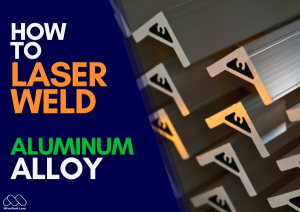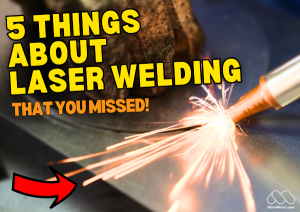Laser Welding: Essential Knowledge You Need to Know
Laser welding is a sophisticated process that requires a solid understanding of various parameters and characteristics of metals.
This article outlines key concepts related to metal properties, welding techniques, and principles that are crucial for successful welding operations.
Understanding Metal Properties Before Laser Beam Welding
Metals possess various mechanical and physical properties that are essential in welding applications.
Key mechanical properties include:
• Strength: The ability of a metal to withstand applied forces without failure.
• Plasticity: The capability to undergo deformation without breaking.
• Toughness: Resistance to fracturing under stress.
• Fatigue Strength: The ability to withstand repeated loading.
Additionally, the physical properties of metals include density, melting point, thermal expansion, thermal conductivity, and electrical conductivity.
Conductivity, specifically, refers to a metal's ability to transmit heat and electricity, with its effectiveness measured by resistivity.
What Else You Want to Know
About Laser Welding?
Laser Welding Techniques and Symbols
Welding involves joining materials through heating, pressure, or both, often with the addition of filler materials.
Key aspects of welding include:
• Weld Symbols: These are essential for understanding drawings and specifications.
Symbols indicate the type of weld and its characteristics, such as surface alignment and joint details.
For example, a symbol indicating flush weld surfaces or a backing bar in the joint.
• Welding Processes: Different welding methods, such as manual arc welding and gas welding, are suitable for various materials, including carbon steel, low-alloy steel, and stainless steel.
Each method comes with specific parameters, including weld speed and heat input, which must be adjusted according to the material and desired outcome.
Handheld Laser Welder Heat Treatment and Preheating
Heat treatment is critical for enhancing the properties of metals before and after welding.
Common methods include annealing, quenching, normalizing, and tempering.
Preheating before welding helps to reduce thermal gradients, thereby minimizing stress and distortion in the welded joint.
It is essential to control the preheating temperature based on the material's thickness and type.
Want to Know Other Details
About Laser Welding Metal?
Laser Welding Machine Quality Control and Defects
Ensuring the quality of welded joints is paramount.
Common defects include:
• Porosity: Gas bubbles trapped in the solidified weld, often due to insufficient shielding or high welding speeds.
• Slag Inclusions: Residual slag that remains in the weld, which can compromise strength and integrity.
• Cracking: Can occur due to thermal stresses or poor material compatibility.
To prevent these issues, it is vital to maintain rigorous control over welding parameters, including current, voltage, and travel speed, while also ensuring the correct selection of welding rods and techniques.
Regular inspections and adherence to standards, such as GB3323, can effectively categorize and minimize defects in welded structures.
By understanding these fundamental concepts, welders can enhance their skills and achieve high-quality results in their welding projects.
Conclusion
Mastering laser welding requires a deep understanding of various metal properties, welding techniques, and quality control measures.
Knowledge of mechanical and physical characteristics, such as strength, plasticity.
And thermal conductivity, is essential for selecting the appropriate materials and processes.
Familiarity with welding symbols and methods enables effective communication and execution of welding tasks.
Moreover, implementing proper heat treatment and preheating techniques can significantly improve the quality and durability of welded joints.
By prioritizing quality control and recognizing potential defects, welders can ensure the integrity of their work.
Leading to successful outcomes in various applications.
Ultimately, continuous learning and adherence to established standards are vital for excellence in the field of laser welding.
Don't Know How to Choose Laser Machine?
We Can Help!
From Engaging Videos to Informative Articles
Welding Like A Pro - Handheld Laser Welder Structure Explained
Achieve welding success with a handheld laser welder! Our video covers key components of 1000W to 3000W models and their uses in carbon steel, aluminum, and zinc sheets. These compact machines offer high-speed, precise welding—2-10 times more efficient than traditional methods. Choose the right power for your needs. Watch our video for insights!
Post time: Jan-07-2025




